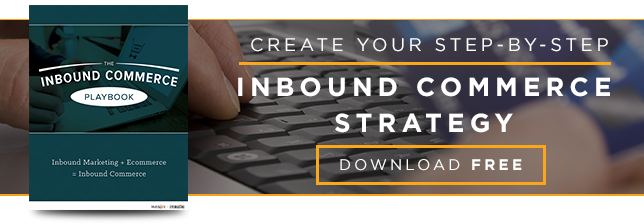 Marketing channels are abuzz with the concept of omni-channel marketing...
Marketing channels are abuzz with the concept of omni-channel marketing...
...and for good reason.
The phenomenal rise of a digitaly connected world allows us to access information across all parts of our day no matter where we are.
It has created a whole new way of living our lives, as we turn our devices into our own personal concierge.
In many ways, this has created the marketer’s nirvana.
We can now reach our customers at all stages of their buying journey and we have digital breadcrumbs to help us determine where they are at in that journey and connect with them accordingly.
These are expansive and confusing times because the consumer has more control than ever before over where and with whom they choose to spend their attention with.
It is now critical to see the human being behind traffic data and statistics.
This is why inbound marketing plays a crucial role of omni-channel marketing.
Inbound marketing is the perfect vehicle to take advantage of the change from an analog to a digital society. The exploding growth of channels available to people to communicate and interact with was making it increasingly difficult for brands to reach out to their buyers in traditional ways.
Inbound marketing can use today’s technology to bring the right people to your brand experience at the right time by creating content that caters to their attention in each stage of the buyer’s journey.
Inbound marketing strategies accomplish this by publishing content that is fashioned with a brand’s buyer persona in mind. The goal of each piece of content is to address the needs of that customer segment and offer solutions to them.
It as a virtual one-to-one conversation between the brand and the buyer.
The fact that so many people have a connected device with them at all times and that device communicates with them so expansively has enabled inbound marketing to become a much bigger and increasingly important strategy.
What makes inbound marketing such a critical component in marketing to an omni-channel culture is the need of this culture to fully engage with their community as they make their purchasing decision.
To do this, they move between devices and channels as they progress towards a resolution. If you want to be in their community as they work their way towards that resolution, you need to build a relationship with them from the beginning to the end of the buyer’s journey across all channels with a cohesive tone, message, and values.
Inbound marketing significantly helps build those relationships. Whether they are reading a piece of blog content or stumbled upon a social media post, they are hearing your brand’s voice. As with any relationship, both sides seek it out because they gain value from it.
If your brand’s voice is one that they find value in, then you are on the path to creating a bond that will benefit both sides over time. Effective communication, no matter where it occurs, relies on building rapport.
When you can build rapport in a consistent, seamless manner across all channels and devices, you create trust with your buyer and a means to convert them.
Google co-founder and CEO Larry Page once said about how people want to find information, “Maybe you don’t want to ask a question; maybe you want to just have it answered for you before you ask it.”
It is this intuitiveness that is being used effectively in omni-channel marketing. What is especially exciting is that this world is relatively young and we are all learning how to walk within it.

